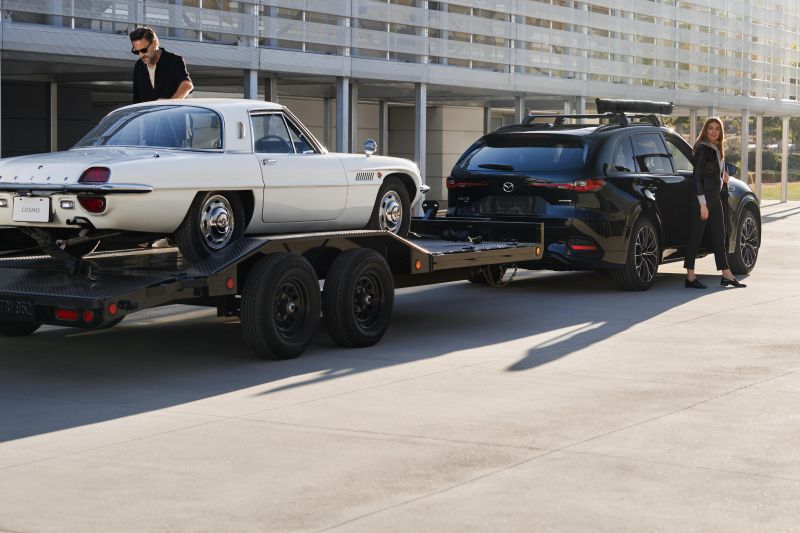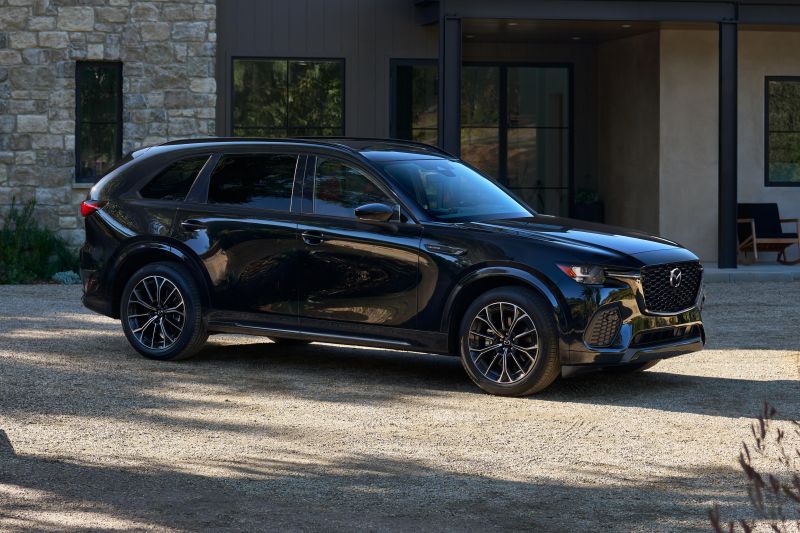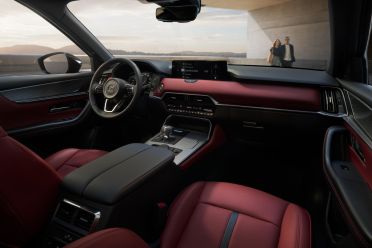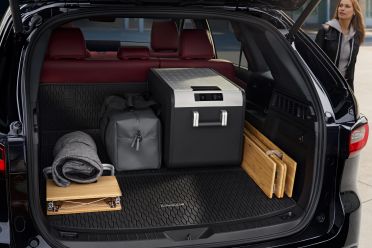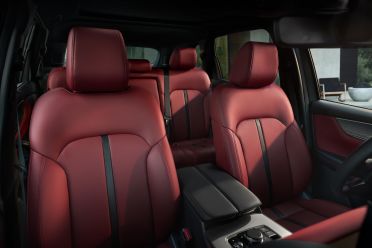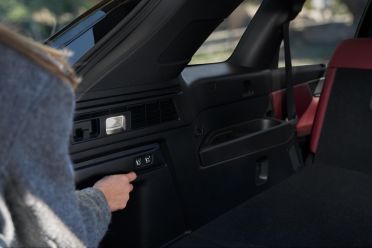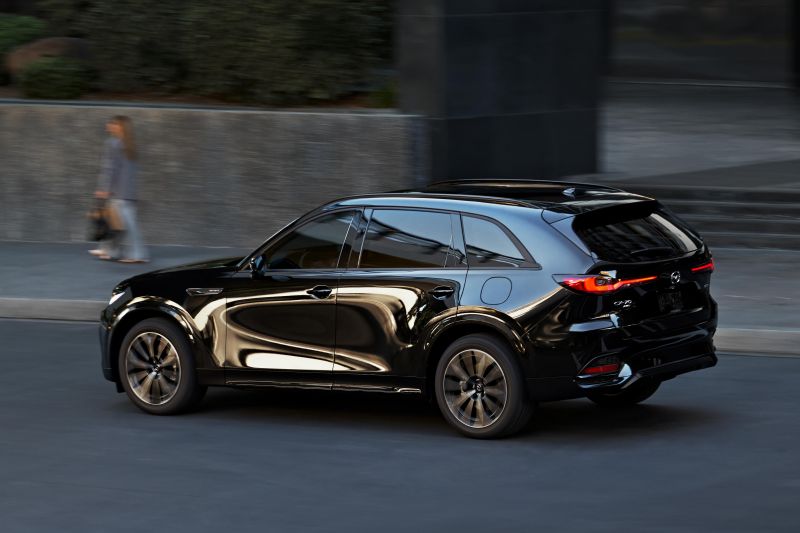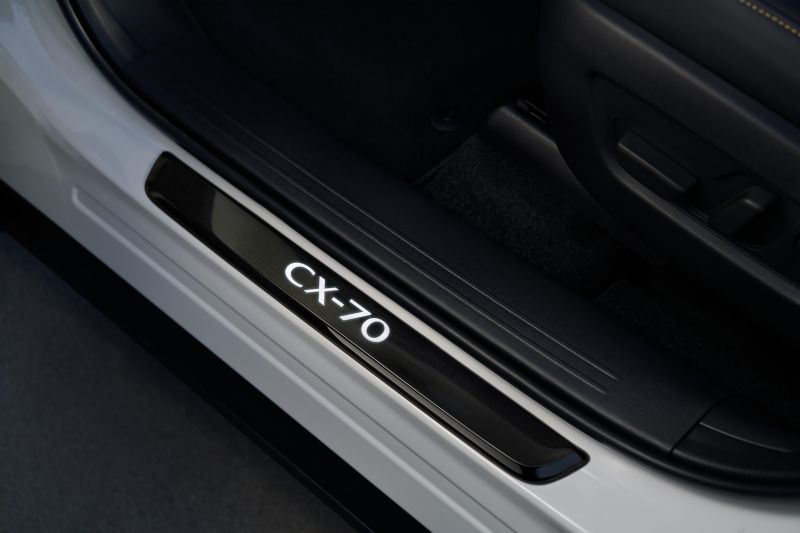The new Mazda CX-70, the third member of the Japanese brand’s new Large Architecture family, will arrive in Australian showrooms by the end of this year.
It will slot in as the five-seat companion to the larger CX-90, sharing its body with only detail design tweaks, while the upcoming, as-yet unrevealed CX-80 will be a seven-seat counterpart to the existing CX-60.
Further details are scant, though Mazda Australia’s consumer website says the CX-70, due in “late 2024”, will feature an “impressive 3.3L inline-6 turbo engine, hybrid efficiency, intuitive technology and dynamic handling”.
While the CX-70 will offer turbocharged petrol and four-cylinder plug-in hybrid drivetrains in North America, the new SUV will offer turbocharged 3.3-litre inline-six petrol and diesel options in Australia from launch, like the CX-90.
In North America, the CX-70’s 3.3-litre turbo-petrol is offered in two tunes: one with 209kW of power and 450Nm of torque, the other with 254kW and 500Nm.
The former features in the Australian-market CX-60, while the latter is found under the bonnet of the local-spec CX-90.
Should the CX-70 get the higher-output tune here, it would give the car another point of difference from the smaller CX-60.
Outputs for the CX-70 diesel haven’t been confirmed, but in the CX-90 this engine produces 187kW and 550Nm.
As is the case in the CX-60 and CX-90, the six-cylinder engines will be mated to Mazda’s 48V M Hybrid Boost system.
This features a small lithium-ion battery and electric motor to extend the fuel-saving stop-start system’s speed range as well as turn the engine off while coasting, in addition to assisting the combustion engine under load.
Expect an eight-speed automatic transmission and rear-biased all-wheel drive as standard. While the CX-60 is offered in some markets like Europe, the UK and Japan with all-wheel drive, the CX-90 is AWD-only in the US and the CX-70 will likely mirror that strategy.
Not confirmed for Australia is the e-Skyactiv PHEV, which teams a 2.5-litre petrol engine with a more powerful electric motor and larger li-ion battery pack.
Mazda USA quotes 26 miles (41.8km) of EV driving range, which is quite a bit less than the “up to 76km” claimed by the Mazda CX-60 PHEV in Australia.
There’s a unique front bumper treatment compared to the CX-90, as well as black exterior accents. Also unique to the CX-70 is a new power-folding function for the second row, allowing you to use buttons in the cargo bay to drop the rear seats.
Inside, there’s an available Red Nappa leather option, which isn’t currently offered by its stablemates. Mazda also offers the CX-70 in North America in a new Melting Copper Metallic exterior paint, as well as the familiar Zircon Sand Metallic which has been filtering out through the company’s lineup but not yet to the Large Architecture family.
Mazda promises a completely flat load bay, even with the second row dropped, while under the boot floor there are three storage spaces.
Another new feature debuting in the CX-70 is an emergency assist function for the Cruising and Traffic Support feature – which combines adaptive cruise and lane centring for semi-autonomous highway driving.
The system will monitor whether the driver closes their eyes or looks away from the road and alerts them to pay attention. If the driver doesn’t respond to prompts, the system will slow the vehicle down or bring it to a complete stop to avoid an accident.
Mazda is also touting a trailer hitch guide that can assist the driver in connecting to a trailer, and has highlighted the 2500kg towing capacity of the CX-70.
In the CX-90, towing capacity is 2000kg with the diesel engine and 2500kg with the petrol. Mazda hasn’t explicitly stated whether all CX-70s will have the same figure.
The CX-70 will almost certainly undercut the CX-90 on price, but it’s unclear by how much. The flagship Mazda SUV is currently priced from $74,550 to $101,130 before on-road costs. Meanwhile, the smaller CX-60 ranges from $60,550 to $86,800 before on-roads.
Mazda’s Large Product Group range consists of two vehicles aimed at markets like Europe and Japan – the two-row CX-60 and three-row CX-80 – and the CX-70 and CX-90 aimed at markets like North America.
Given Mazda’s outsized popularity in Australia, we often given get a mix of vehicles aimed at different markets, so it’s perhaps no surprise we’ll be offered all four vehicles.
Australia was one of very few markets in the world to receive both the Japan-focused CX-8 and US-focused CX-9 three-row crossovers.
Stay tuned to CarExpert for all the latest.
MORE: 2025 Mazda CX-70 revealed
MORE: Everything Mazda CX-70





